Hypo Tubes serve as crucial tools in various medical procedures, offering flexibility and precision for minimally invasive interventions, cardiovascular surgeries, neurovascular interventions, urology procedures, and more.


The Hypotube, also known as a “flexible hypo tube”, “laser-cutting tube” or a “laser cutting flexible tube”, “laser cut hypo tubing” is a hollow and flexible tube primarily used in medical applications, although the latest technology of hypo tubing is attempting to make a difference in areas such as robot remote control.
The term “Hypo Tube”, distinct from what is known as a “hypodermic tube”, is designed for delivery systems for minimally invasive interventions, offering a combination of push, trackability, lubricity, torque, kink resistance, and flexibility. These features allow it to be straight as a line or curve like a snake or circle, facilitating safer and smoother navigation of the vasculature.
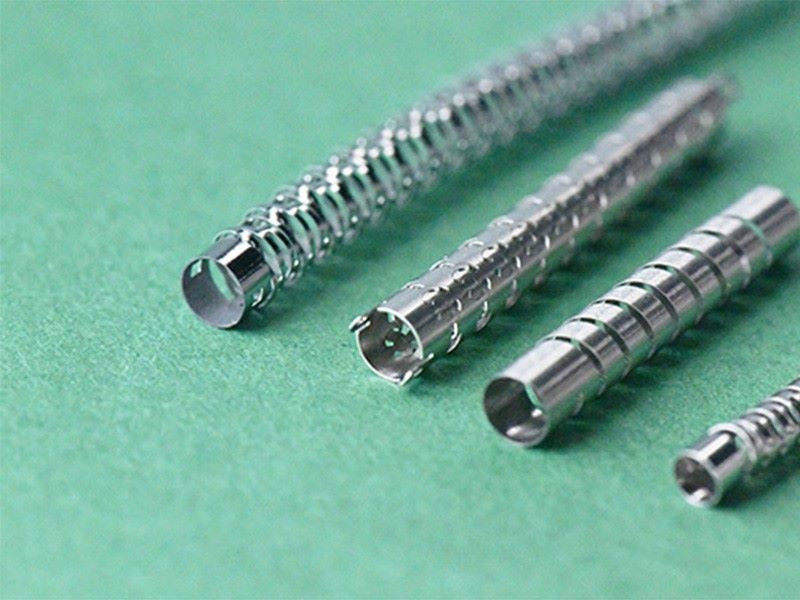
Recognizing the superior performance of hypo tubes, medical device manufacturers have embraced the use of flexible laser-cut tubes in various new procedural applications.
These types of tubing cover a wide range of applications, from common flexible tubing used in cardiovascular procedures, minimally invasive surgery, neurovascular interventions, peripheral vessels, urology, ear-nose-throat (ENT) procedures, structural heart interventions, endoscopy (including medical, industrial, and electronic endoscopes such as uroscopes, biliary endoscopes, gastrointestinal scopes, and anoproctoscopes), to laser micromachining of precision thin-walled metal tubing.
They are utilized in various surgical procedures and orthopedic instruments, such as soft drills, planers, nasal drills, indwelling needles, puncture needles, radiofrequency ablation needles, and other types of interventional medical devices.
A hypotube manufacturer - Manners Technology offers a wide range of products, from short, small-diameter tubing used in minimally invasive procedures, including neuro interventional radiology, to larger-diameter tubing extending dozens of feet in length, which is utilized in mobile robotic arms and related remote control machines.
The small size, flexibility and hollow nature of hypotubes have opened up unprecedented possibilities in the medical field. They have become a powerful tool for doctors to achieve precision treatment, minimally invasive surgery and drug delivery.
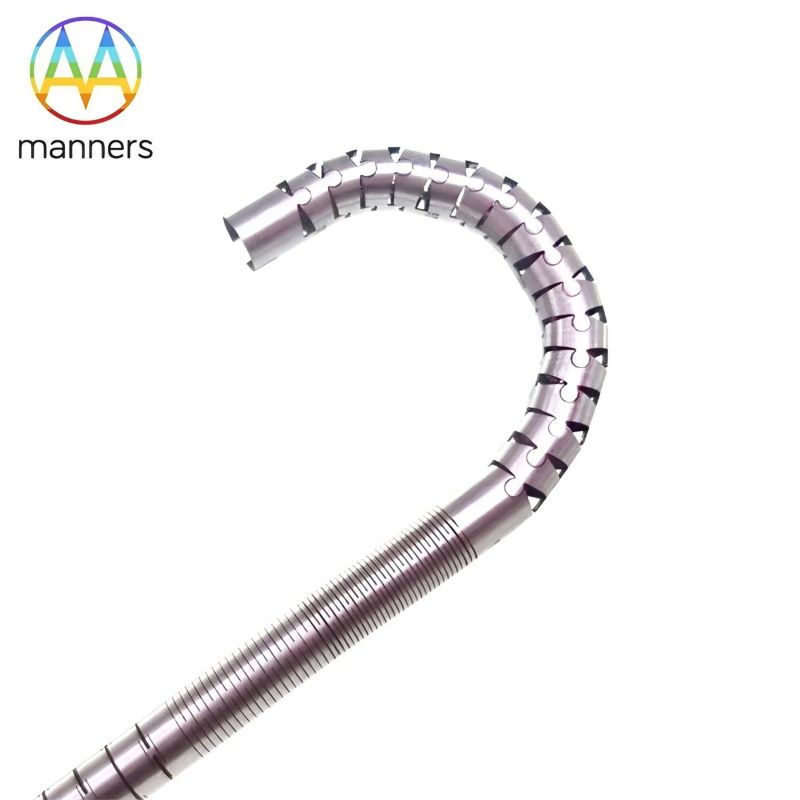
Based on different product types, these tubes can be categorized into various types, including coated hypo tubes, spiral hypo tubes, long-cutting tubes, horn-shaped hypo tubes, short-cutting hypo tubes, and more. Notably, there is a specific type of hypo tube that allows bending at any angle using a long wire when pulling the end.
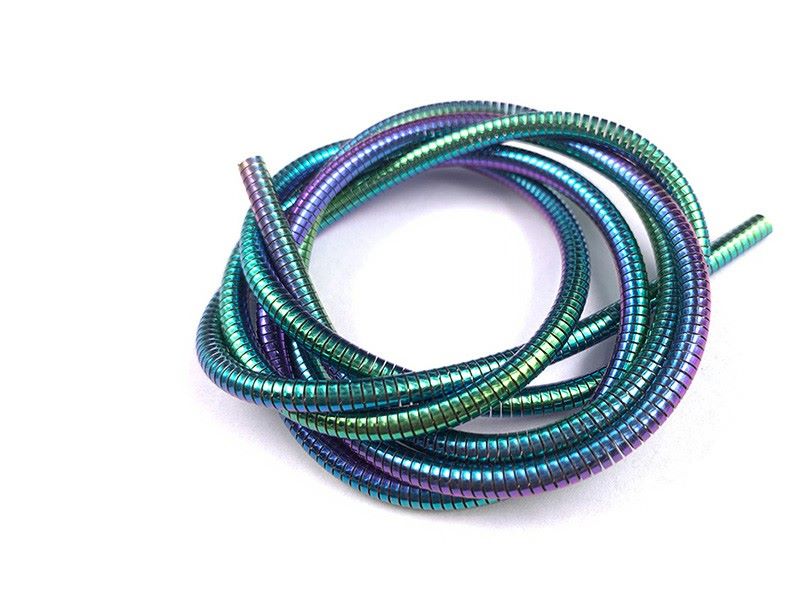
▲ Coated hypo tube
The precision machining instrument used for this combines a flexible segment with a grooved push piece, with wires welded to the inner wall of the tube through these pressed grooves, ensuring excellent flexibility, high precision, and pushability of the laser-cut hypo tubing.
The broad definition of a hypo tube can be further subdivided based on factors such as size, including 0.65 SUS hypo tubing, 0.36 SUS tapered hypo tubing, 0.35 Ni-Ti catheter, and more; and materials, such as 304, 316L, L605, Ni-Ti, and other exotic alloys.
At Manners Technology, these tubes, a core product for us, are primarily made of stainless steel 304, 316, and Nitinol. They come in sizes ranging from 0.3 mm to 20 mm and wall thicknesses from 0.06 mm to 2 mm. We also offer fractional and custom-drawn sizes to meet specific requirements.
1. Lasercut hypotube
Lasercut Hypo Tubes undergo precise and efficient machining utilizing advanced laser technology, significantly enhancing the characteristics of the metal shaft, including flexibility and rotational sensitivity.
The thin-walled tube is meticulously cut using a five-axis laser cutting machine, following a preset computer program. A long, intermittent spiral is intricately carved into the tubing wall through this process. The spiral pattern is instantly cut as the tube moves continuously at high speed. Laser timing is precisely triggered at the beginning of each cut.
This autonomous precision tube processing involves precision rotary axes capable of 360° rotation and dynamic cutting processes facilitated by open CNC technology, driven by direct drive motors and servo motors to the axis system. This setup enables rapid processing of longer or smaller sections of the laser hypotubing.
This advanced technology finds applications in a wide array of products such as metal bare stents, drug-coated stents, biological tissue engineering scaffolds, flexible hypo tubes, filters, valve stents, developing rings, lithotripsy mesh, and more.
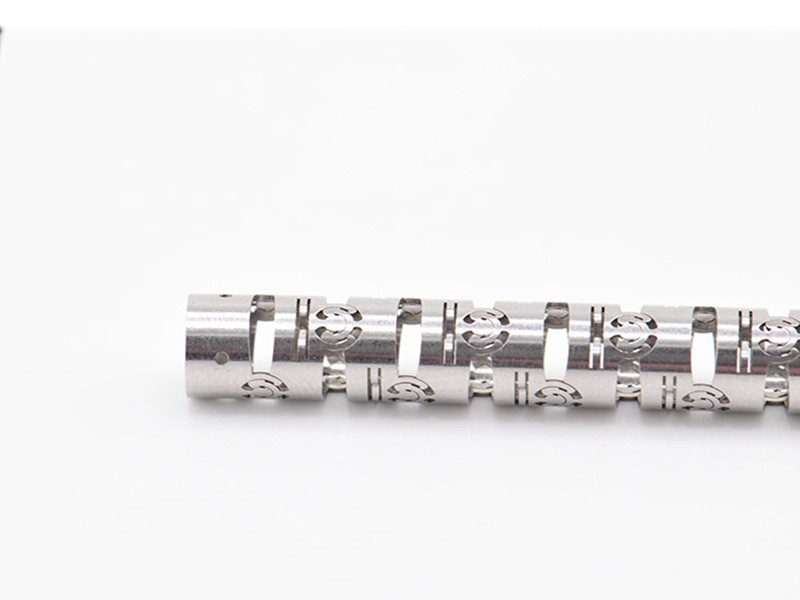
▲ Lasercut hypotube
2. Riveted hypotube
When riveting technology is used in the Hypotube process, the main purpose is to fix small parts together through precision mechanical riveting to form a strong mechanical connection.
Hollow rivets (or semi-hollow rivets) have a hollow part on the rivet rod, which requires less force to deform and is suitable for medical devices with extremely high weight requirements, such as light-weight applications such as heart stents and guidewire connections.
Unlike welding or bonding, riveting combines parts through physical deformation and does not require the use of heat or adhesives, avoiding the effects of heat treatment on material strength and shape.
Rivets need to be inserted precisely into holes in Hypotubes and other connectors. Due to the typically small size of Hypotubes, the design and insertion of rivets must be extremely delicate to prevent damage or deformation of the material. Micromanipulation or robotic arms are often used to aid in precise alignment during this process.
Once the rivet is in place, a specialized tool or device is used to plastically deform the rivet. This is typically accomplished by applying mechanical pressure to flatten or expand the head or tail of the rivet to create a secure fit. Due to the thin material of the Hypotube, control of pressure is critical to prevent deformation or cracking of the tube wall.
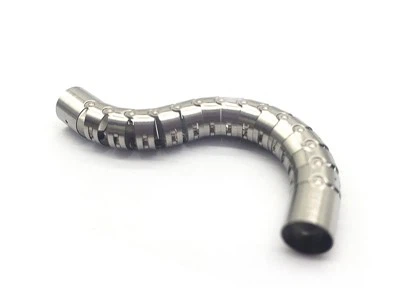
▲ Riveted hypotube
Laser Technology - Manners Technology excels in fine processing technologies like laser dry cutting, wet cutting, drilling, and grooving.
Rivet Technology - Disassembly and maintenance are more convenient, as only the damaged part needs to be replaced. In medical hypodermic tubes, it can even be reused multiple times.
Precision Machining - With a commitment to quality products, competitive prices, and quick turnaround times, Manners Technology’s versatile stainless steel hypo tubing, produced with high precision and state-of-the-art facilities, stands as a reliable choice benefiting a wide range of industries, both within and beyond the medical field. Manners Technology consistently aims to maintain its position as a leading manufacturer of existing products and a benchmark for quality in new project development.